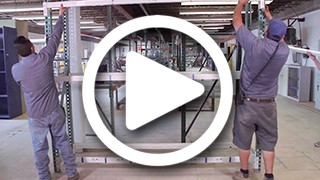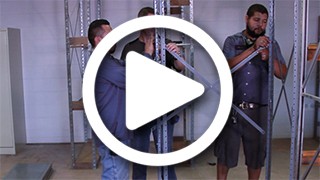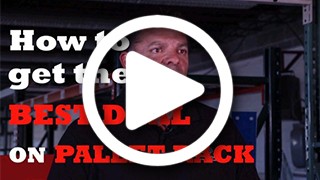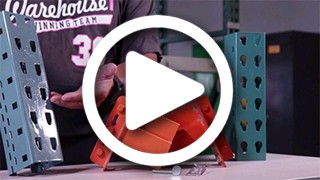How to Tell if Pushback Rack Design is Right for You
Whenever you work in a warehouse, you will eventually encounter space problems. You will need a system to maximize as much room as possible. The problem is, several expansion methods exist, and you must determine which ones are best for your workplace.
One such method is pushback loading, which uses a mechanical railing to store as many as 6 pallets deep of inventory. In this article, we will examine the benefits and drawbacks of this system and help you determine whether it will benefit your workplace.
Three Benefits of Pushback Loading
One of the biggest benefits of pushback loading is the space it saves. Pushback racks offer more dense storage than other options and can hold 2-6 pallets per lane, which saves workers time and energy.
As you place pallets into a storage lane, the pallets stored behind it are automatically pushed into an angled incline on rails. Gravity takes over, pushing each unit load behind the lead pallet to the rear of the storage lane. 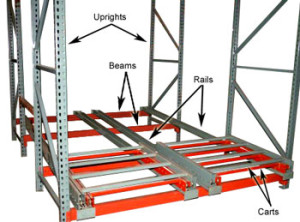
With a pushback loading system, the forklift truck always stays in the aisle. This saves the driver time he or she would normally use reaching into the rack or entering it, as is necessary in drive-in systems. Drivers and other workers always work with pallets facing the operating aisle, increasing their visibility and decreasing the chance for accidents or misplaced inventory.
When compared to similar systems, pushback loading is generally smoother. Pushback carts are linked. Each cart has an anti-lift-out device that protects against dropped or damaged products. Maintenance bearings are sealed, reducing the risk of overall cart damage and saving your company money on common maintenance issues. Low storage height ensures the lead pallet will always go to the highest available rack, increasing workers’ safety.
Drawbacks of Pushback Loading
Despite their advantages, pushback loading isn’t right for every warehouse. Pushback loading requires precise angles to load and transport inventory safely, so the smallest miscalculation could stop work for several minutes.
You will use “last in, first out” loading, which may not be optimal for certain inventory types. You should avoid this system if you need to optimize vertical storage; pushback’s required incline can result in less vertical density than selective pallet rack.
Contact us at Warehouse1 today to discuss your Pushback Rack needs.
